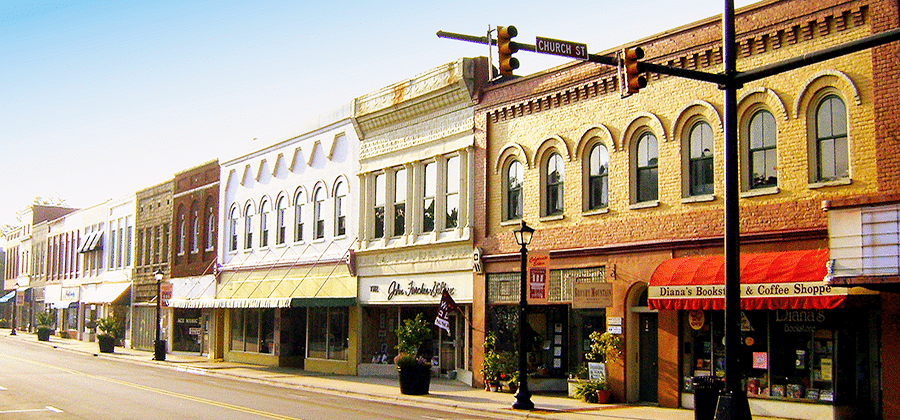
Main streets everywhere, in urban metros and small towns alike, are the lifeblood of community. What makes them so important?
Economy
Small businesses thrive on main streets, and small businesses are the backbone of our economy. In this way a main street can be a local employment center that reflects the prosperity of a community. It can offer the convenience of local shopping and services and it can also be the center of civic life – a place for forums and for public events. A healthy main street can also protect property values in surrounding neighborhoods. Unfortunately, because of the severe economic impact of the coronavirus pandemic, many storefront businesses have closed resulting in vacancies on main streets, a new and unexpected challenge. But unlike big box stores, businesses that tend to be less nimble and less entrepreneurial, small businesses are proving themselves to be extraordinarily imaginative in creating new customer experiences as the pandemic unfolds. They may yet prove that main streets can be quite resilient
History
The main street as an urban form has existed for millennia as a place where people make commercial transactions and a place to meet and connect. Usually it is a community’s historic core, a place of shared memory. Those historic buildings on main streets not only lend character but are a reminder of who we were and how the past has shaped us. Extraordinary historical events, including the exclusion of African Americans during the Jim Crow era, occurred on main streets.
Quality of life
Main streets are a place where people come together to gather, shop, do business, eat, play, define common purpose, bridge differences and participate in civic life. They are dynamic hubs that reflect the unique qualities of their surrounding area. A healthy, vibrant, thriving area provides a sense of pride and helps shape a positive identity for a community whereas a main street where nothing happens or where buildings are vacant can create a sense of distress. The coronavirus pandemic has shown us how much we appreciate having places to go. It has also highlighted the importance of walkability as a way to stay safe and healthy. At the same time, as work habits change, people often choose where to live before finding a job or choose where to live and then tele-commute. This makes it all the more important that main streets thrive as communities continue to change and grown with them.
Patrice Frey sees main streets as entrepreneurial eco-systems, often the single biggest asset that a neighborhood or small town has. Without bold action, she’s afraid that the livability and character of our local neighbourhoods and the vibrancy of our cities are at risk. As the president and CEO of the National Main Street Center, she is fully focussed on offering programs and guidance on placemaking, local entrepreneurship, facade improvements, crowdfunding and green rehabs to the Center’s network of approximately 1,800 members, all in service of revitalizing commercial main streets in both big cities and small.
Listen to my interview with Patrice to learn more.
Elkin, NC Downtown by G Keith Hall, CC BY-3.0
